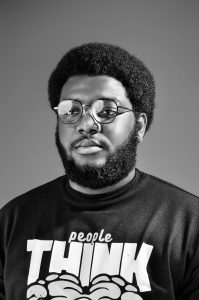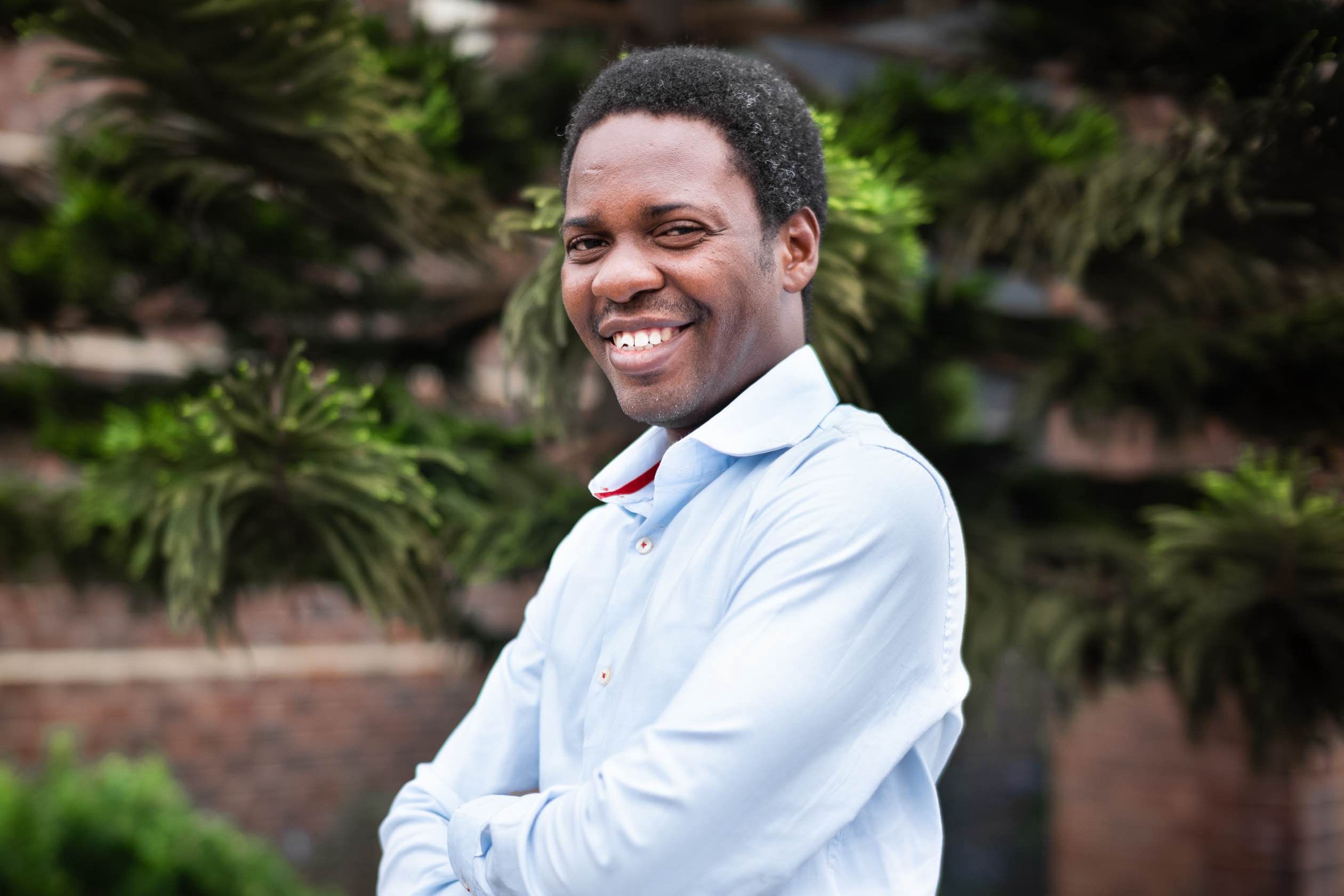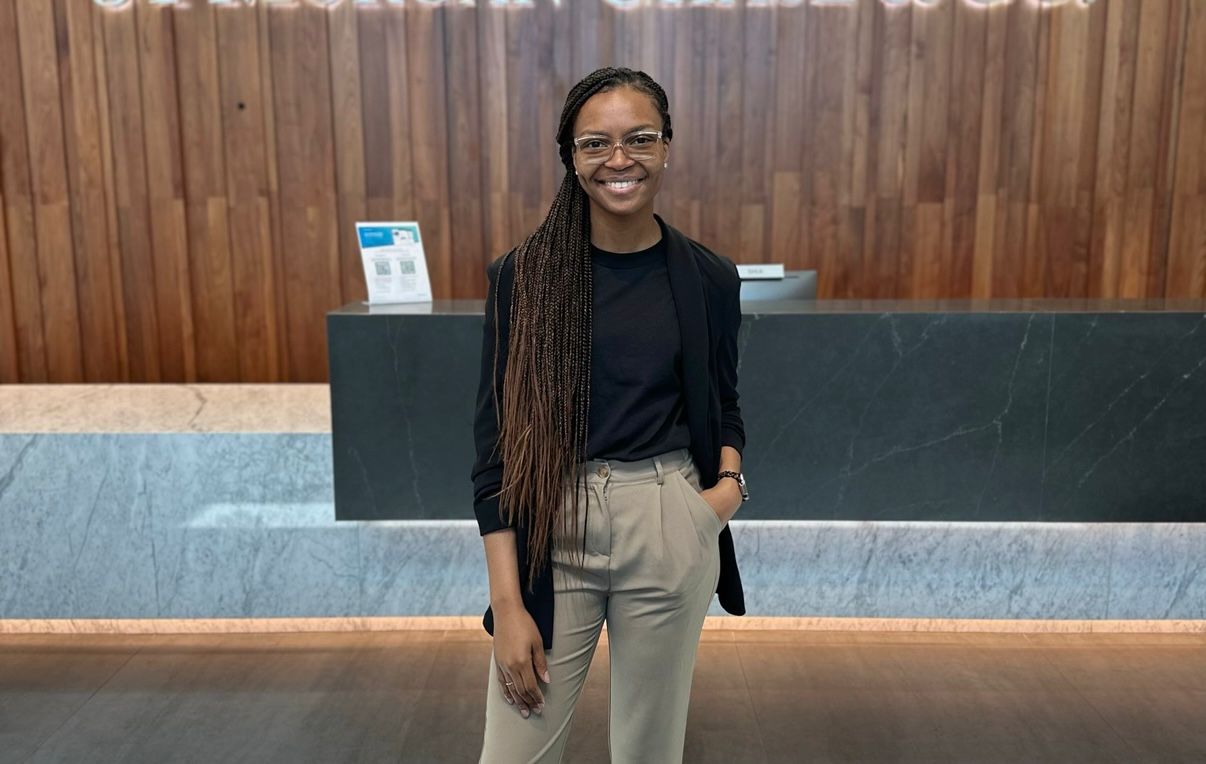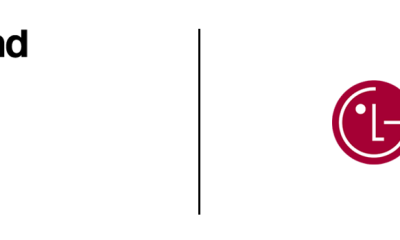Interviews
Don’t Let Your Passion Die And If You Have The Resources To Help Make A Difference – Sneha Bose (FFC)

BAO talks to Sneha Bose, Chief Information Officer for Fashion For Charity Africa, on the impact this scheme is having on Nigerian society.
Tell us about Fashion For Charity Africa. What do you do exactly?
Fashion For Charity Africa is a social entrepreneurship project initiative to help the Internally Displaced People in Nigeria. I have been the Chief Information Officer for fashion For Charity Africa, and my role has been to develop a communication system for the company. I was also responsible for the content development, social media marketing, negotiating with the stakeholders and sponsors like the BBC Africa, La Liga and finally aligning the business’ strategic plans.
What was the idea behind or influenced the setting up of this organisation?
The main idea behind the social entrepreneurship project viz. Fashion For Charity Africa was making a difference in the society. Due to the insurgencies in the Northern Nigeria a lot of people are separated from their family with little or no scope of building back their lives. So our main objective was to support these vulnerable communities of people or as we commonly know them as the Internally Displaced People, by collaborating with the other Non-Governmental Organizations thus raising sensitization across the society.
What are the key indicators by which you measure your organisation’s impact in Nigeria?
The three major key performance indicators for our organization and its impact in Nigeria are – Fundraising Metrics, Donor Retention Metrics and Social Media Metrics.
Under Fundraising metrics, we have further subdivided it into 3 more categories into – gifts secured, donation growth, and donor growth rate.
Under Donor Retention Metrics, we measure it based on the outreach rate.
And finally, under the Social Media Metrics, we have sub-divided it into two major categories – amplification rates (based on re-tweets, reposts and shares on the various media channels) and fundraiser participation rates.
We are slowly but steadily progressing, and hope to create more buzz as we grow bigger.
What are the challenges faced by your organisation? How are you overcoming them?
The main challenge that we had to face was in terms of professionalism from the agencies we were partnering with. I have had the chance of working in various places around the globe and experiencing the Nigerian work culture did come with its own set of challenges. However, once you know the way around and figure out the gaps; our work became a lot easier.
How do you get funding in order to achieve your objectives?
In order to achieve our objectives, we would craft out events that has the potential of raising funds from interested bodies, mainly the international and local NGO’s and the various international embassies, and not to forget the Nigerian entertainment sector. Till date our main sponsors and partners have been very helpful and supportive of our cause.
Finally, what is your message to our readers?
Don’t let your passion die and if you have the resources to help make a difference in our society or the community, then let us all put our hands and heads together to share knowledge and education thus removing any signs of illiteracy, discrimination and nurturing the youth brigade to become the leaders of tomorrow.
Her Bio
Sneha has 5+ years’ of work experience in the field of Information Technology, Project Management, Business Development, Marketing & Media Strategies and Retail Operations. She is a successful orator and has conducted corporate trainings for various organizations. She is also a part of the international public speaking community of Toastmasters International. She has been nominated for the award of the Social Impact Maker in Nigeria, and has been interviewed by the BBC Africa and other popular Nigerian FM Stations. She believes strongly for education and youth empowerment and dreams to have her own organization that will suffice the needs of all these youth who do not have the amenities for free education.
Interviews
International Men’s Day Exclusive with Itohowo Udofia: A Design Visionary & Next-Gen Founder

Itohowo Udofia is a driven product designer at EDITED, designing the myEDITED platform which leverages AI-powered retail market data and analytics to enable iconic brands like Lacoste, Puma, and Boston Proper to make smarter and data-driven business decisions. With a unique fusion of design and business acumen, Itohowo’s work centers on creating solutions that are not just functional but transformational, giving businesses the insights they need to scale and thrive in a fast-evolving marketplace. Starting his design journey in 2018 as a graphics designer and pivoting to product design in 2020, Itohowo has since demonstrated his expertise across global tech companies. In his roles as a product designer at startups like Borderless, Heala Tech, and Earna, he has crafted innovative solutions that simplify everyday life and transform business operations. In this International Men’s Day exclusive interview with Alaba Ayinuola of Business Africa Online (BAO), Itohowo speaks on his journey into product design and passion to uplift and empower the next generation of designers and innovators, particularly in Nigeria. Excerpts.
Alaba: What inspired you to become a product designer, and how has your journey evolved overtime?
Itohowo: Let’s start from the beginning, as far back as primary school. I’ve always been good with computers, I was one of those kids who could tear apart a radio and put it back together and this I believe set the path for a career in technology. Fast forward to junior secondary school, I played a lot with dreamweaver for frontend design and in senior secondary, I did countless CISCO networking certifications. University was where it got really interesting because we took courses in everything, several programming languages, frontend and backend development, data analysis, system architecture etc. At every point in time, I took interest in all of this but it never stuck.
Sometime in my second year, I dabbled into photography and graphic design and this set the path for product design. I realized the same way my developer friends would spend hours writing code, I could easily spend all my time designing. In march 2020, I got a call from my friend and he asked me “do you want to be poor”, of course I said “No”, and he goes “learn product design” and so I did. I believe whatever I put my heart to, I’ll be successful at it and so I could have been a successful brand and graphic designer but there was something about product design that till today, I find it hard to explain. Looking back, you will see I tried it all, and design was the only thing that stuck, and I’ve stayed true to it.
Having worked with multiple startups, established organizations around the world, and completed business and design courses, I think I made the right choice. Recently, I watched a video talking about how most entrepreneurs are a jack of all trades, masters of none, but oftentimes better than a master of one and again, looking back at my journey, I realize I have knowledge of a bit of everything, and that sets the foundation for the future.
Alaba: What design principles do you emphasize in your work?
Itohowo: My personal design principles are:
- Functionality first: I believe the best experience you can give a user is a functional and working product and it’s even better when the visuals complement that functionality.
- Be minimal: You can’t go wrong with minimalism. Keep design clean, clear, simple and easy on the eye.
- I am not the user: Whilst I have a ton of experience and can make intelligent hypotheses, I am not the user. Testing and getting feedback from users cannot be overemphasized.
Alaba: Can you walk us through your design process when approaching a new project?
Itohowo: Design is completely iterative and I find that you can fit any project requirement into the Design Thinking process. Every project is unique, meaning the requirements, use cases, and information available are different. And so my approach to a project is determined by those requirements. The design thinking process has 5 steps; empathize, define, ideate, prototype, and test.
Some projects come with a lot of already predefined requirements and research and I just jump straight into the ideation stage and then move forward to the prototype stage or two steps back to the empathy stage. Other projects require me to start from other points of the design thinking process. In essence, whatever the project, you would always find me inside the design thinking process.
Alaba: How has your design practice evolved over time, and what skills have you developed?
Itohowo: As all designers, I started out recreating designs on dribbble to improve my UI skills. Because I was a graphic designer prior, it was a bit easy to familiarize myself with UI design tools like Adobe XD and Figma. I also had an understanding of typography, colors, etc. But it had its down side. I remember a friend telling me “you design UI like it’s a graphic poster”. I kept at it, designing everyday, watching youtube and eventually I got my first gig. I am a hands-on learner and so to improve, I had to be in the thick of things. I would take on projects for free or for stipends and eventually I got better with time as all things.
As you grow as a designer, you realize dribbble UI isn’t very practical in the real world. As I got better in UI design, I started focusing a lot on user experience design, and honestly, unless you’re working on a real product, used by real users, you will never learn UX design. A couple years later, several design projects laters, I decided to add some business knowledge to my arsenal and so I took a couple business courses which helped me participate more actively in business decisions.
I maintained multiple jobs at the same time, soaking in as much experience as I could in a short time. I was working closely with start ups and cross functional teams and all of these set me up to where I am today. I can thrive in any design and business environment, my UI and UX skills are great and continue to improve. I am very critical of myself and demand constant improvement and when I wake up daily, I look at my design from the previous day and ask myself “what can I do better?”.
Alaba: What’s the most significant design challenge you’ve faced, and how did you overcome it?
Itohowo: Every project comes with its own challenge. Thinking back now, my final year project was probably the project I faced the most significant design challenge. Here’s why! For my final year project, I designed a mobile app that helps children with Autism Spectrum Disorder (ASD) identify their medication. At the time, I was still relatively new to design and designing for children is hard, even harder when designing for children with special needs. The font, the color, the illustrations, everything about the application had to be spot on, because if it’s not, it could cause one of the children to have a moment.
You also have to consider the technical ability of the children across the ages. I did a lot of research into existing applications, methodologies including gamification, Applied Behavioural Analysis (ABA), design thinking and I also had to include parental control. I designed and built the app and then came the testing of the application. I had to find a school, get approval from parents or guardians, and provide phones for testing which are not very easy to do. Eventually, I found a school, got approval, tested, and gathered invaluable feedback. The principal of the school said the application could potentially be a game changer and suggested increasing the scope of the project to include a web version and more games.
Alaba: How has your experience as a mentor shaped your approach to design and leadership?
Itohowo: Being a mentor keeps me grounded in the basics of design. When you grow as a professional, you tend to skip a few steps, make decisions on a larger scale, forgetting the nitty gritty of things. With my mentees, I am reminded of the foundation of design and why we do what we do. In regards to leadership, I’ve learned to be more patient. A friend said “Dear senior staff, be patient with your younger staff. A senior staff member was once patient with you”. As a mentor, you are like a father, and your children will sometimes make mistakes. When this happens, you must ensure you correct them in love.
Alaba: What qualities do you look for in a mentee, and how do you approach mentorship?
Itohowo: First is desire and fire. I like individuals who are hungry to grow and are ready to put in the work. Secondly, I would say I like individuals who take ownership of their growth, which essentially means in the unlikely event I am absent, your growth isn’t impacted. It means if I’m not available to answer your questions, you don’t stop and wait for me. When I lead teams and or people, I give autonomy and in return expect near perfection. My mentorship style mirrors my leadership style. I give my mentees autonomy to pick their own path, pick their own projects, decide their growth timeline but I demand accountability.
Alaba: What should we look forward to from you in the future?
Itohowo: At the moment, my friend, Adekanbi Josteve and I, have created what we believe could potentially be the future of financial technology in Africa. Essentially, it is a contactless payment solution that utilizes sound based technology for a secure and seamless transaction. I have other project ideas around professional dating, advertisement, and healthcare. Outside tech and design, I would very much love to bring to screen movie scripts that I have written.
Alaba: Lastly, What advice would you give to designers seeking to create meaningful change through their work?
Itohowo: Practice, practice, practice. Work on a real project, even if it is for free because the experience and knowledge you garner from that is immeasurable.
BIOGRAPHY

Itohowo Udofia is a driven product designer at EDITED, designing the myEDITED platform which leverages AI-powered retail market data and analytics to enable iconic brands like Lacoste, Puma, and Boston Proper to make smarter and data-driven business decisions. With a unique fusion of design and business acumen, Itohowo’s work centers on creating solutions that are not just functional but transformational, giving businesses the insights they need to scale and thrive in a fast-evolving marketplace.
Starting his design journey in 2018 as a graphics designer and pivoting to product design in 2020, Itohowo has since demonstrated his expertise across global tech companies. In his roles as a product designer at startups like Borderless, Heala Tech, and Earna, he has crafted innovative solutions that simplify everyday life and transform business operations. He has also worked across four continents, including Africa (Nigeria), Asia (India), North America (USA), and Europe (Germany and the UK), gaining extensive experience in diverse markets and industries such as fintech, health tech, construction tech, delivery and logistics, B2B SaaS, data analytics, and AI.
Itohowo holds a Master’s with Distinction in Computer Science from Middlesex University, London, and a bachelor’s degree in computer science from Bowen University, Nigeria where he graduated with a first class, placing him as the second best graduating student in department and college.
His achievements in tech and design are not only highlighted by 100x income growth, but also by the prominent brands he now partners with, compared to the start of his career. This growth reflects both his rapid career ascent and the value he consistently brings to each role.
Having worked with numerous startups, many of which have gone on to achieve great success, he has gained first hand both design skills and strategic business knowledge in creating valuable tech solutions. This blend of business acumen and design expertise is further strengthened by his completion of two mini MBAs in Business Design & Strategy and Business Administration and Management, further enhancing his ability to bring a comprehensive and forward-thinking approach to tech solutions.
Beyond his work in tech, Itohowo is driven by a passion to uplift and empower the next generation of designers and innovators, particularly in Nigeria. As an academic researcher in health tech, he explores impactful solutions to pressing health challenges. He actively mentors emerging designers, helping them launch and grow their careers. Looking ahead, he aims to build startups that address real-world problems, create valuable educational resources for designers, and bring his screenplay projects to life through film production, showcasing his multifaceted creativity.
Interviews
Oluwafemi Adebiyi: A Seasoned Leader Launching and Scaling Tech Ventures

Oluwafemi Adebiyi is a seasoned leader in Africa’s tech ecosystem, with over a decade of experience driving growth across e-commerce, fintech, and B2B startups. Since 2012, he has helped launch and scale several ventures that went on to become unicorns, including Jumia, Africa’s first unicorn listed on the NYSE, and Opay, valued at over $2 billion with investment from top Asian venture funds. Oluwafemi has a proven track record in partnership development, business operations, and market growth strategy, demonstrated through roles at Vconnect, Jumia, Opay, TradeDepot, and currently as the Country Manager for CinderBuild. In this interview with Alaba Ayinuola of Business Africa Online (BAO), Oluwafemi shares his career path in the Africa’s tech ecosystem and how he has helped launch and scale ventures that have become unicorns in Africa. Excerpts.
Alaba: What sparked your interest in e-commerce for construction, and how did you get started?
Oluwafemi: My interest in e-commerce for construction stemmed from my extensive background in e-commerce and business development, particularly my roles in leading digital transformation at companies like Jumia and Opay. I have always been passionate about identifying emerging trends and applying digital solutions to traditionally offline industries. When I joined CinderBuild as Country Manager, I saw a unique opportunity to revolutionize the construction industry by applying e-commerce principles to improve how products and services were accessed.
The construction sector, often seen as slow to adapt to technology, presented an exciting challenge. I wanted to create a scalable platform that could help construction companies and artisans streamline their operations, access materials more efficiently, and reduce overhead costs. With my experience in B2B e-commerce, I was excited about the potential to bring modern commercial practices to an industry that has historically been fragmented and underserved by digital solutions.
Alaba: Can you share your experience working with e-commerce platforms?
Oluwafemi: I’ve had extensive experience working across various e-commerce platforms, especially during my time at Jumia, Hellofood, and CinderBuild. At Jumia, I was responsible for managing over 300 vendors and ensuring strategic growth within a highly competitive market. My role involved designing and implementing sales strategies, improving profitability, and leveraging data analytics to optimize vendor performance and pricing strategies.
At CinderBuild, I worked on developing a B2B e-commerce platform for the construction industry, focusing on making the procurement process easier and more efficient for companies and artisans. I managed everything from product leasing to developing marketing and operational strategies that helped onboard hundreds of resellers and corporate clients. I also had to create effective systems for inventory management, tracking sales, and ensuring customer satisfaction, which further sharpened my ability to work with e-commerce platforms from an operational and strategic perspective.
Alaba: What are the unique challenges and opportunities in construction e-commerce?
Oluwafemi: The construction industry faces several challenges when it comes to e-commerce, such as long payment cycles, lack of standardization in product offerings, and the challenge of reaching dispersed and often offline stakeholders like small contractors and artisans. However, these challenges also present significant opportunities.
One key opportunity is digitizing the supply chain and creating platforms that streamline procurement. By offering construction companies and artisans access to a wide range of materials and services with transparent pricing, we can help reduce inefficiencies in purchasing and improve inventory management. Additionally, e-commerce can help democratize access to quality materials and tools for smaller contractors who may not have the buying power to access bulk pricing. There is also an opportunity to create data-driven insights that help construction companies make better decisions around product sourcing and project management.
Alaba: How do you think construction companies can effectively leverage e-commerce to grow their business?
Oluwafemi: Construction companies can leverage e-commerce by adopting platforms that connect them with suppliers, contractors, and clients in a more streamlined, transparent, and cost-effective way. For example, companies can benefit from digital marketplaces where they can access a variety of suppliers with competitive pricing, enabling them to make faster purchasing decisions and better manage their budgets.
Additionally, using e-commerce to manage the logistics of construction projects—from procurement to delivery—can help minimize delays and reduce costs. Implementing tools like real-time tracking for materials and products, as well as leveraging data analytics for demand forecasting, can help construction companies operate more efficiently. The key to success is integrating these e-commerce solutions with existing business processes and ensuring that teams are trained to adapt to the digital environment.
Alaba: Can you discuss the importance of real-time tracking and updates?
Oluwafemi: Real-time tracking is crucial in the construction industry for several reasons. Projects often run on tight deadlines, and delays in material deliveries or product procurement can cause significant disruptions. With real-time tracking, construction companies can monitor the status of their orders, track deliveries, and quickly respond to any issues that arise, reducing the chances of delays.
From a financial perspective, real-time tracking helps maintain better control over budgets by ensuring that materials are being used efficiently, and by providing data that can optimize future procurement. In an e-commerce context, real-time updates also foster greater transparency with suppliers and customers, improving trust and satisfaction.
Alaba: What role do you see digitalization playing in the future of construction?
Oluwafemi: Digitalization is poised to play an increasingly important role in the future of construction, particularly in areas like supply chain management, project tracking, and customer relationship management. By integrating technologies like Artificial Intelligence (AI), the Internet of Things (IoT), and cloud-based project management tools, construction companies can enhance productivity, reduce errors, and improve decision-making.
For example, AI can be used for predictive maintenance, helping prevent costly equipment breakdowns, while IoT can provide real-time data on construction sites, helping teams manage resources better. Digital tools can also facilitate collaboration between stakeholders, from architects and contractors to suppliers and clients, making projects more efficient and less prone to error.
Alaba: What emerging trends or technologies do you see shaping construction e-commerce?
Oluwafemi: Emerging trends in construction e-commerce are centered around automation, data analytics, and enhanced connectivity. One trend I see gaining traction is the use of Artificial Intelligence for supply chain optimization. AI can predict demand for materials, forecast delivery times, and even suggest the most cost-effective suppliers based on historical data.
Another exciting development is the integration of Augmented Reality (AR) and Virtual Reality (VR) for virtual site tours and design previews. This technology allows clients and contractors to visualize projects before materials are even purchased, reducing the risk of errors and ensuring greater alignment on design.
Additionally, blockchain technology is emerging as a way to improve transparency and security in e-commerce transactions, which is particularly important in industries like construction where large transactions are the norm.
Alaba: Lastly, What advice would you give to aspiring e-commerce professionals in the construction industry?
Oluwafemi: My advice to aspiring e-commerce professionals in the construction industry would be to stay adaptable and focused on problem-solving. The construction industry may be traditionally slow to adopt new technologies, but there are huge opportunities for innovation. It’s essential to understand the unique challenges of the sector and how digital solutions can address them.
Be prepared to wear multiple hats—working with different stakeholders (suppliers, contractors, artisans, etc.), understanding the regulatory environment, and leveraging technology to streamline operations. Also, invest in understanding the customer journey—whether you’re serving large corporations or small contractors, understanding what drives their decisions and pain points will help you develop solutions that truly add value. Lastly, stay curious and always be on the lookout for emerging technologies that can help improve the efficiency and transparency of the industry.
Interviews
Lesley Abegunde: A Minimalistic View on Agile Project Management

Lesley Abegunde is a certified Project Management Professional (PMP) and agile thought leader with years of experience in Agile transformation. She frequently speaks at industry conferences and conducts workshops on minimalist approaches to project management. In this exclusive interview with Alaba Ayinuola of Business Africa Online (BAO), Lesley speaks on minimalism and agile project management. Excerpts.
Alaba: Thank you for joining us today, Lesley. Let’s quickly get to the heart of our discussion on how the combination of minimalism and Agile project management has gained significant traction in the industry. Could you start by explaining the intersection of these two concepts?
Lesley: Of course. At their core, both minimalism and Agile share a fundamental principle: focus on what truly matters and eliminate everything else. Just as minimalism teaches us to keep only what adds value to our lives, Agile project management should retain only the processes and tools that directly contribute to project success. Everything else is waste.
Alaba: That’s fascinating, Lesley. Can you walk us through your journey of synthesizing minimalism with Agile methodologies?
Lesley: Certainly. This approach evolved from years of observing teams struggle with what I term “process debt.” Many organizations eagerly adopt Agile frameworks like Scrum or SAFe, but then inadvertently complicate matters by layering on numerous additional processes. Ironically, this creates the very complexity that Agile was designed to eliminate. This realization led me to a critical question: “What if we approached Agile with a minimalist mindset? What’s the bare minimum process required to deliver value effectively?”
Alaba: Could you give us some concrete examples of how this minimalist approach manifests in practice?
Lesley: Oh definitely. In a minimalist-agile environment, daily stand-ups can sometimes be redundant, especially when updates are repetitive. Instead, holding stand-ups just three times a week can reduce unnecessary meetings and free up time for productive work. This way, quick updates or clarifications can be shared via email, with meetings focused on resolving blockers or adding value.
Another example is focused documentation. In a minimalist-agile world, we prioritize high-impact, essential documentation and remove clutter that doesn’t directly benefit users or the project. By focusing on “living” documentation in tools like Confluence or SharePoint, teams create easily editable and collaborative knowledge-based documentations. This keeps documentation streamlined and relevant, facilitating collaboration and avoiding the accumulation of outdated information.
.
Alaba: That’s quite radical compared to traditional project management approaches. How do you maintain control and visibility with such a stripped-down process?
Lesley: (laughs) The illusion of control through excessive documentation and processes is exactly what we’re trying to move away from. Real control comes from transparency and rapid feedback loops. We maintain visibility through working software and direct communication. Our metrics are simple: lead time, cycle time, and customer satisfaction. Everything else is supplementary.
Alaba: Let’s talk about some of the major efficiency challenges in Agile Project Management. What are the biggest issues you’ve encountered?
Lesley: In my experience, there are three critical challenges that consistently plague Agile projects, even in mature organizations. First is scope creep, which can occur even within our sprint boundaries. Second is what I call Value Displaced Backlog (VDB), where our backlog becomes bloated with items that seemed important at one time but no longer align with current business values. Third is the general inefficiency that creeps into our Agile processes over time.
Alaba: Could you elaborate on Value Displaced Backlog? It’s not a term I’ve heard before?
Lesley: VDB is a phenomenon I’ve observed where backlogs become graveyards of good intentions rather than dynamic tools for project steering. Items get added faster than they’re removed, and many of these items, while valuable when added, become outdated or misaligned with current business objectives. Yet teams often feel obligated to keep them because they’ve already invested time in refining them.
Alaba: This sounds like a significant challenge. How does your minimalist approach address these efficiency issues?
Lesley: This is where minimalism becomes a powerful tool for Agile project management. Let me break down our approach into three key areas.
First, let’s talk about decluttering backlogs. We treat backlog grooming like minimalists treat closet cleaning – if an item hasn’t been touched or seriously considered in the last three months, it needs to justify its existence. We use what I call the “Three Q’s” approach:
- Does this item still align with our current business objectives?
- Can we deliver tangible value from this item within the next quarter?
- Would removing this item create any significant risks or gaps?
If we can’t answer “yes” to at least two of these questions, the item gets archived. This isn’t about deletion – it’s about maintaining focus on what truly matters now.
Alaba: How do you handle pushback from organizations that are used to more structured approaches?
Lesley: I start by acknowledging their concerns and then propose a simple experiment: Let’s try running one small project with minimal processes and measure the outcomes. The results usually speak for themselves. Teams become more engaged, delivery speeds up, and quality improves because people can focus on the work instead of the process.
I also emphasize that minimalist Agile isn’t about having no process – it’s about having just enough process. The amount varies by context, but the principle remains: if a process doesn’t directly contribute to delivering value, question its necessity.
Alaba: What advice would you give to project managers who want to adopt this minimalist Agile approach?
Lesley: Start with radical honesty about your current processes. Ask yourself and your team: “If we had to deliver value with only five practices or tools, what would they be?” Then experiment with using just those elements for a sprint or two. Be prepared for some discomfort – it’s natural when letting go of familiar processes.
Also, focus on principles over practices. Understanding why we do something is more important than how we do it. This enables teams to make better decisions about what to keep and what to eliminate.
Alaba: Looking ahead, how do you see this minimalist approach to Agile evolving?
Lesley: I believe we’re going to see a growing emphasis on simplification across the industry. The complexity of modern software development demands simpler processes to manage it effectively. I’m particularly excited about the potential of AI to further streamline our processes, allowing us to focus even more on creative problem-solving and value delivery.
The future of Agile is not about adding more frameworks or scaling patterns – it’s about distilling Agile to its essence and applying it thoughtfully. As the saying goes, perfection is achieved not when there is nothing more to add, but when there is nothing left to take away.
Alaba: Thank you for these insights, Lesley. Any final thoughts for our readers?
Lesley: Remember that minimalism in Agile isn’t about making things bare or austere – it’s about making room for what matters most: delivering value to customers, fostering team creativity, and building sustainable practices. Start small, experiment often, and always ask, “Is this essential?” Your team and your projects will be better for it.
-

 Afripreneur2 days ago
Afripreneur2 days agoOluchi Anoruo on building SmartPharm and addressing access to healthcare products
-

 Afripreneur2 days ago
Afripreneur2 days agoRedefining Real Estate Marketing: An Interview with Imelda Usoro Olaoye, Founder of Thinkmint
-

 Economy2 days ago
Economy2 days agoMeta Hosts its First Youth Summit in Nigeria to Drive Innovation and Empowerment
-

 Afripreneur1 day ago
Afripreneur1 day agoMeet Datari Ladejo, the digital strategist helping brands thrive in the digital economy
-

 Technology2 days ago
Technology2 days agoLG’s Brand Reinvention: A Global Success Story
-

 Press Release10 hours ago
Press Release10 hours agoThe 234 Venture Vault Launches Tech Startups and Talents Hunt Across Nigerian Tertiary Institutions





